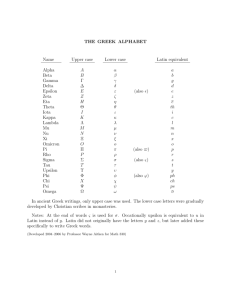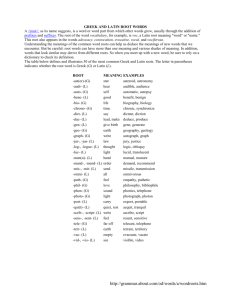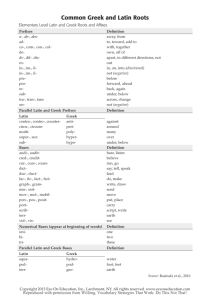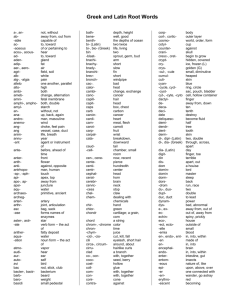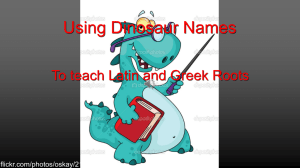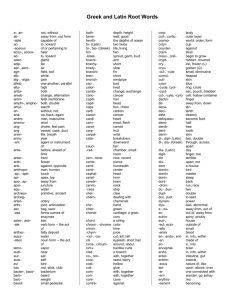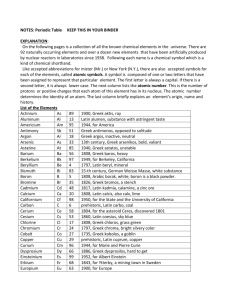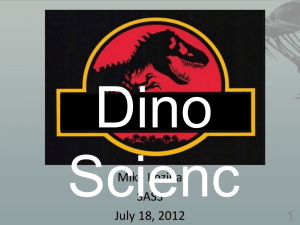What's in a Name?
advertisement
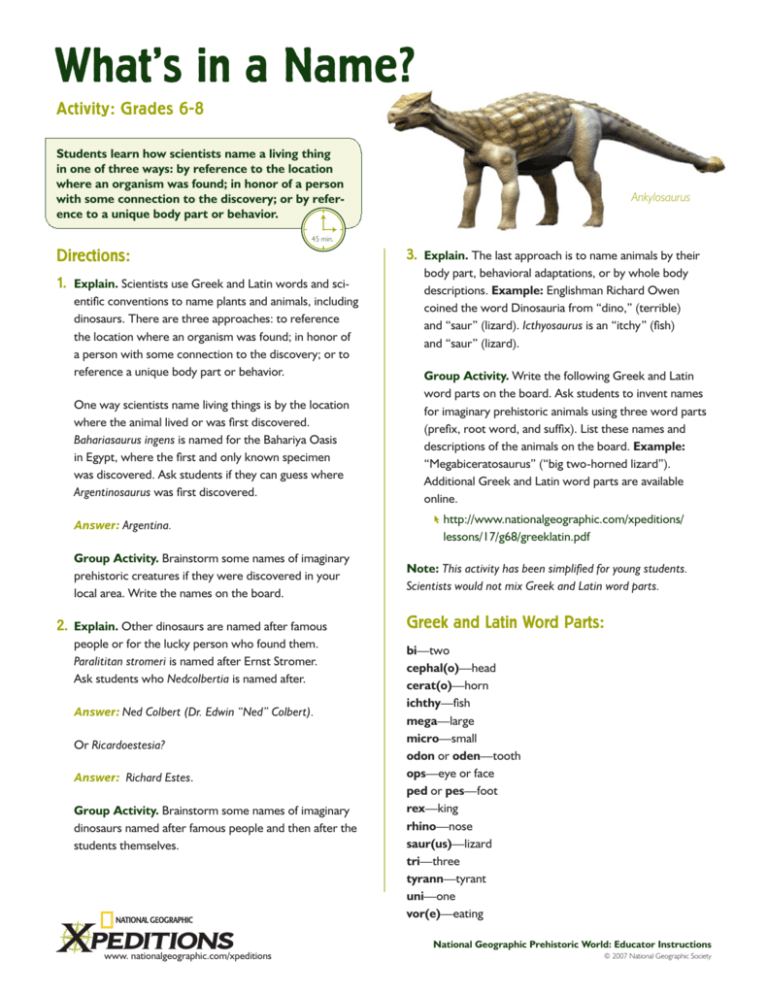
What’s in a Name? Activity: Grades 6-8 Students learn how scientists name a living thing in one of three ways: by reference to the location where an organism was found; in honor of a person with some connection to the discovery; or by reference to a unique body part or behavior. Ankylosaurus 45 min. Directions: 3. Explain. The last approach is to name animals by their body part, behavioral adaptations, or by whole body descriptions. Example: Englishman Richard Owen coined the word Dinosauria from “dino,” (terrible) and “saur” (lizard). Icthyosaurus is an “itchy” (fish) and “saur” (lizard). 1. Explain. Scientists use Greek and Latin words and scientific conventions to name plants and animals, including dinosaurs. There are three approaches: to reference the location where an organism was found; in honor of a person with some connection to the discovery; or to reference a unique body part or behavior. Group Activity. Write the following Greek and Latin word parts on the board. Ask students to invent names for imaginary prehistoric animals using three word parts (prefix, root word, and suffix). List these names and descriptions of the animals on the board. Example: “Megabiceratosaurus” (“big two-horned lizard”). Additional Greek and Latin word parts are available online. One way scientists name living things is by the location where the animal lived or was first discovered. Bahariasaurus ingens is named for the Bahariya Oasis in Egypt, where the first and only known specimen was discovered. Ask students if they can guess where Argentinosaurus was first discovered. http://www.nationalgeographic.com/xpeditions/ lessons/17/g68/greeklatin.pdf 6chlZg/ Argentina. Group Activity. Brainstorm some names of imaginary prehistoric creatures if they were discovered in your local area. Write the names on the board. Note: This activity has been simplified for young students. Scientists would not mix Greek and Latin word parts. Greek and Latin Word Parts: 2. Explain. Other dinosaurs are named after famous people or for the lucky person who found them. Paralititan stromeri is named after Ernst Stromer. Ask students who Nedcolbertia is named after. bi—two cephal(o)—head cerat(o)—horn ichthy—fish mega—large micro—small odon or oden—tooth ops—eye or face ped or pes—foot rex—king rhino—nose saur(us)—lizard tri—three tyrann—tyrant uni—one vor(e)—eating 6chlZg/Ned Colbert (Dr. Edwin “Ned” Colbert). Or Ricardoestesia? 6chlZg/ Richard Estes. Group Activity. Brainstorm some names of imaginary dinosaurs named after famous people and then after the students themselves. www. nationalgeographic.com/xpeditions 1 National Geographic Prehistoric World: Educator Instructions © 2007 National Geographic Society

